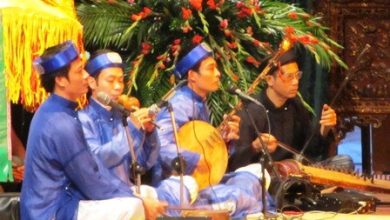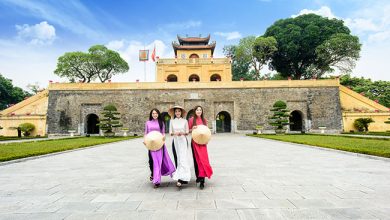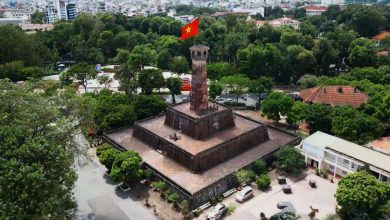Review Meeting of the Heritage Education Programmes at Thăng Long Imperial Citadel and Cổ Loa Relic Site
On the morning of 28 August 2019, the Thăng Long – Hà Nội Heritage Conservation Centre worked with the Hanoi Department of Education and Training to organize a meeting to evaluate the heritage education programmes at Thăng Long Imperial Citadel and the Cổ Loa Relic Site. In attendance at the event were representatives of UNESCO Office in Hanoi, Department of Cultural Heritage, Hanoi Party Committee Department of Propaganda, Vietnam Association of Historical Science, district-level bureau of education and training, and school teachers.

Researcher Dương Trung Quốc addressing the meeting.
Aware of the importance of education of the public, especially heritage education for young generations, in recent years the Thăng Long-Hà Nội Heritage Conservation Centre has developed some in-depth heritage education programme for students of different school levels. Two flagship programmes are “I’m a little archaeologist” and “Learning about heritage”. This is a new approach in heritage education that creates useful and interesting programmes where students learn as they play. Students become more active in exploring and understanding about heritage through interactive and experiential activities which help to sharpen their observation, presentation, teamwork skills while honing such qualities as patience, creativity and attention to details.
In 2018, the heritage education programme of Thăng Long Imperial Citadel and Cổ Loa Relic Site was upgraded to a new level to become more professional and extensive thanks to the close cooperation with the education sector of Hanoi. The signing ceremony of the MOU in heritage education between the Thăng Long – Hà Nội Heritage Conservation Centre and the Hanoi Department of Education and Training took place in September 2018 right after the commencement of the new school-year. This was an important milestone marking the engagement of the Hanoi education sector and thereby confirming the participation of schools and teachers to make the heritage education programmes more effective and appealing to schoolchildren.
After one year of implementation, with the support of the Hanoi Department of Education and Training, schools and teachers, a total of 19,086 students have taken part in the heritage education programmes at Thăng Long Imperial Citadel and the Cổ Loa Relic Site, including 17,847 at Thăng Long and 1,239 at Cổ Loa. Besides, the number of schoolchildren visiting the two sites outside the programme also amounted to an impressive figure of nearly 100,000.
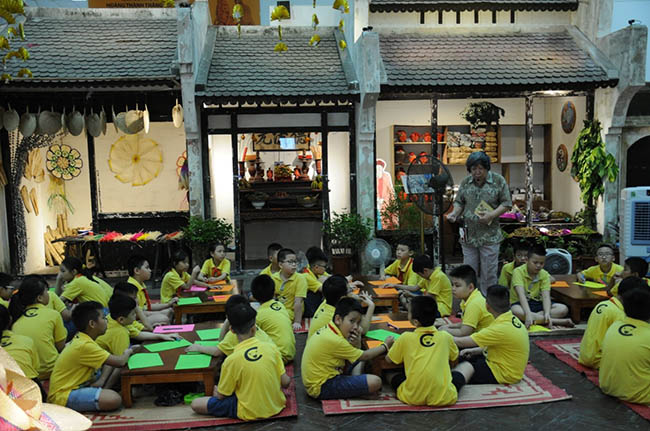
Learning about education, traditional culture under the guidance of historians and folk artisans.
The review meeting served to evaluate the achieved results and the limitations of the heritage education programmes after one year of implementation while setting the directions for subsequent years. It also helped to approach and link more closely with the schools through the active contribution of the professionals, teachers and students who provided valuable inputs and feedback as well as recommendations and experience.
Discussions at the meeting focused on specific issues like the upgrading of facilities in service of the students, the improvement of the programme contents, the products suitable for different school levels, the proposals and solutions towards enhanced linkages between heritage sites and schools to implement the programme effectively.
At the meeting, the participants, including teachers, shared a lot of experience and contributed various practical ideas to help promote the heritage education programmes at Thăng Long Imperial Citadel and Cổ Loa Relic Site.
Addressing the meeting, Mr. Dương Trung Quốc Vice Chair and Secretary General of Vietnam Association of Historical Science took note with appreciation the efforts made in the past year by Thăng Long – Hà Nội Heritage Conservation Centre, the support from Hanoi Department of Education and Training and the Cổ Loa Relic Site. He also noted that, in this modern time, a combination of traditional space and technology is conducive to students’ acquisition of knowledge.
On behalf of the schools in the suburb of Hanoi, Mr. Nguyễn Xuân Lý, Principal of the Tân Lập Lower Secondary School in Đan Phượng District remarked that through the learning and experience at Thăng Long Imperial Citadel, students know more about the origin of the nation, thanks to which they now take greater pride in the country’s tradition and demonstrate greater solidarity towards their peers inside and outside the school setting, improving their leadership skills and building on their talents. Many of them have been able to prove themselves and surprise others as they partake in experiential activities at the Citadel, such as kneading dough figurines, balancing on bridges, making paper fans, playing blindman’s buff and tug-of-war, etc.
Ms. Hoàng Thanh Thủy, Principal of Nguyễn Trường Tộ Lower Secondary School in Đống Đa District expressed her hope that the Hanoi Department of Education and Training and the Centre will continue organizing knowledge competitions about the two heritage sites of Thăng Long and Cổ Loa as well as other relic sites in Hanoi. She also suggested the establishment of websites and heritage archives so students who are keen on history can stay home and learn for themselves, especially when they cannot afford to visit the sites directly.
On behalf of the non-public schools, Ms. Nguyễn Thị Vân Trang, Principal of the Ngôi Sao Inter-level School said that she wanted the heritage sites to have more experiential and extra-curricular activities that develop life skills for students, so they know more deeply about culture and can make decisions about their jobs and career in the future.
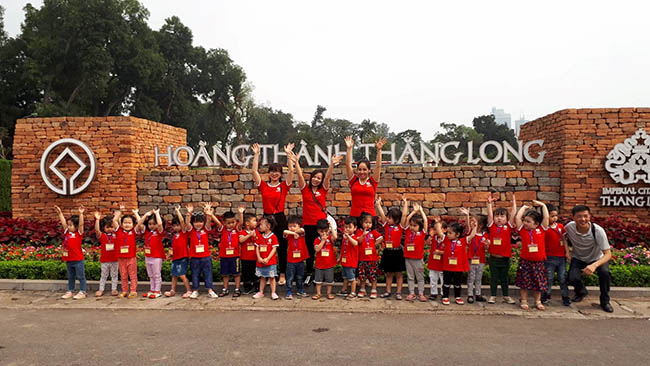
Children visiting the heritage site with a lot of excitement and eagerness.
With efforts from the Centre and support from the education sector, the heritage education programmes at Thăng Long Imperial Citadel and Cổ Loa Relic Site will help bring heritage closer to the young generations, helping them to know more about and take greater pride in the traditional cultural values bequeathed to them by forefathers and thereby becoming more patriotic. Through the programmes, the linkages between heritage sites and schools and families have also been fostered, contributing to an uplifted sense of responsibility among the community and the young generations about the safeguarding of the invaluable heritage of the nation. The message of heritage conservation will then be spread widely in the community and future generations.
Kim Yến

